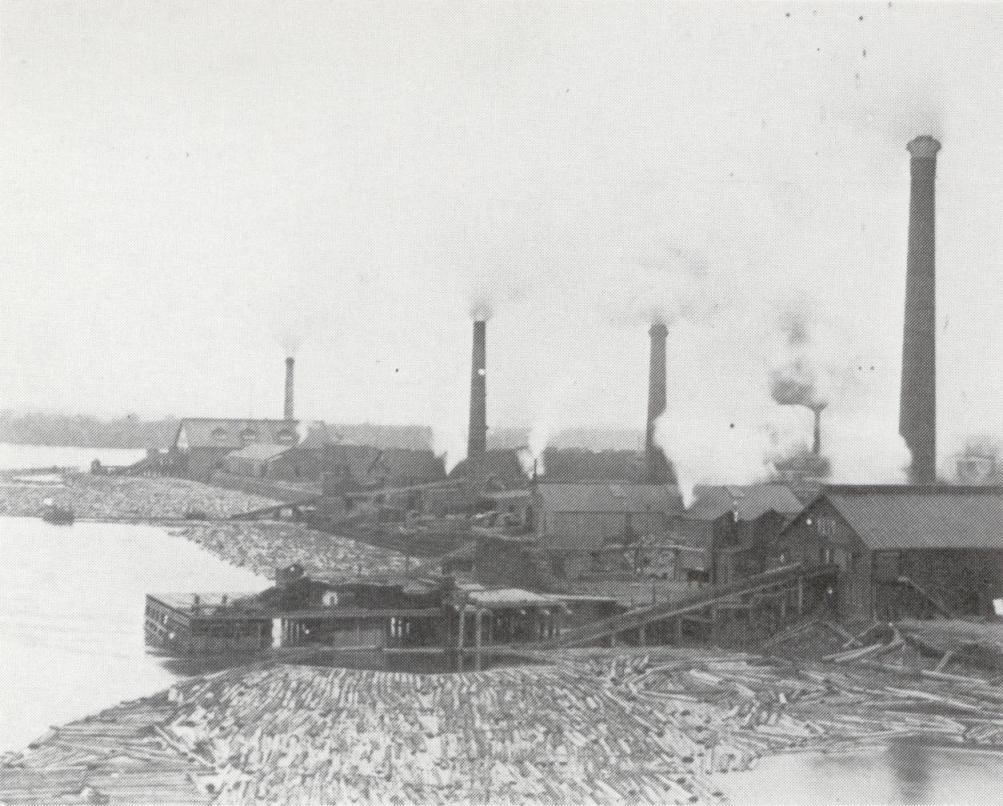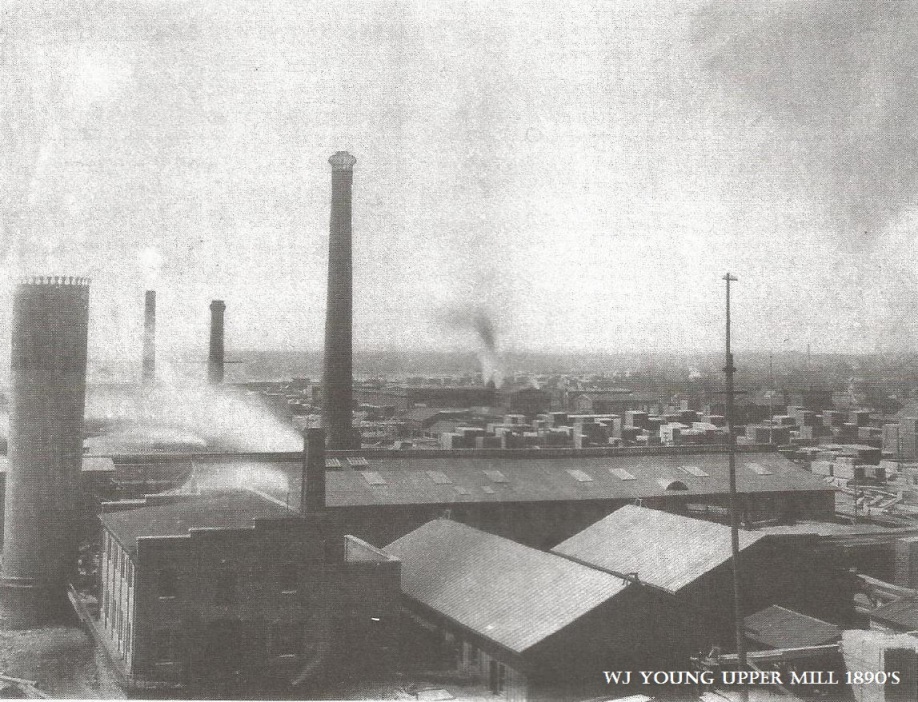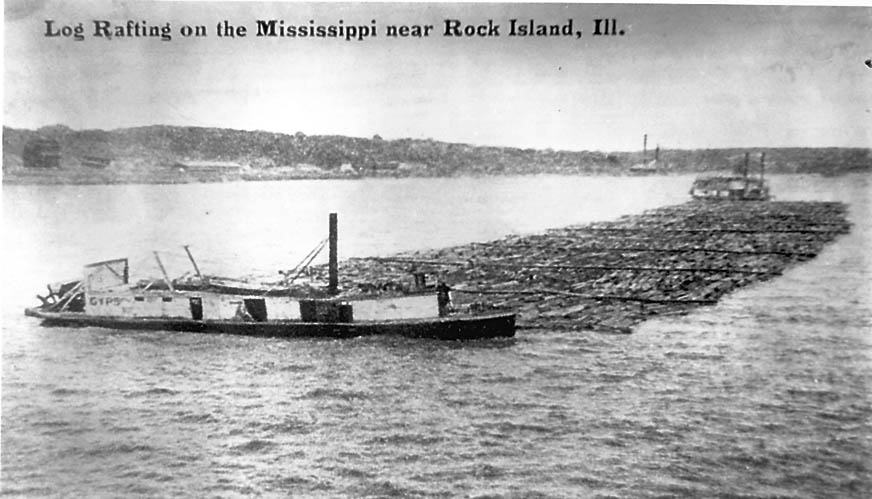State of Lumber Industry as of October 1902
From: The Clinton Herald; October 2, 1902, P. 6
Transcribed by a Clinton County IaGenWeb volunteer.
LUMBER INDUSTRY.
ITS CONDITIONS IN THE PAST AND AT THE PRESENT TIME.
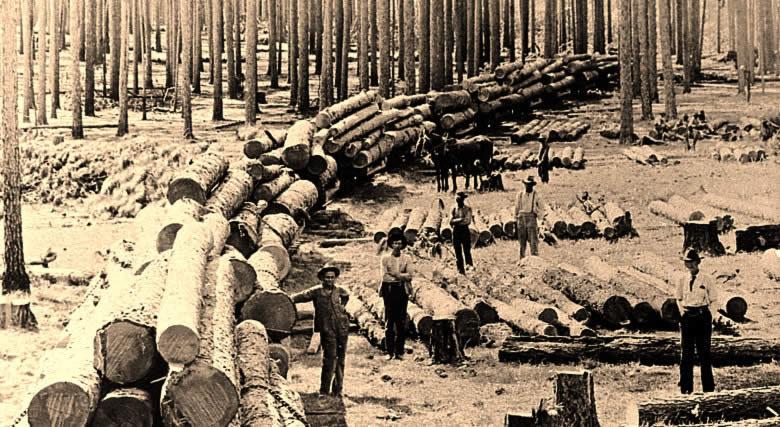 Number of Lumber Mills Along the Shores of the Mississippi River Rapidly
Decreasing – Decline of the Rafting Business – Possibilities of the Future.
Number of Lumber Mills Along the Shores of the Mississippi River Rapidly
Decreasing – Decline of the Rafting Business – Possibilities of the Future.
This year the attention of many has been called to the fact that there has been
a rapid decrease in the number of log rafts which, from a period reaching back
to the early settlement of the river valley and extending down to the present,
have year after year and season after season floated 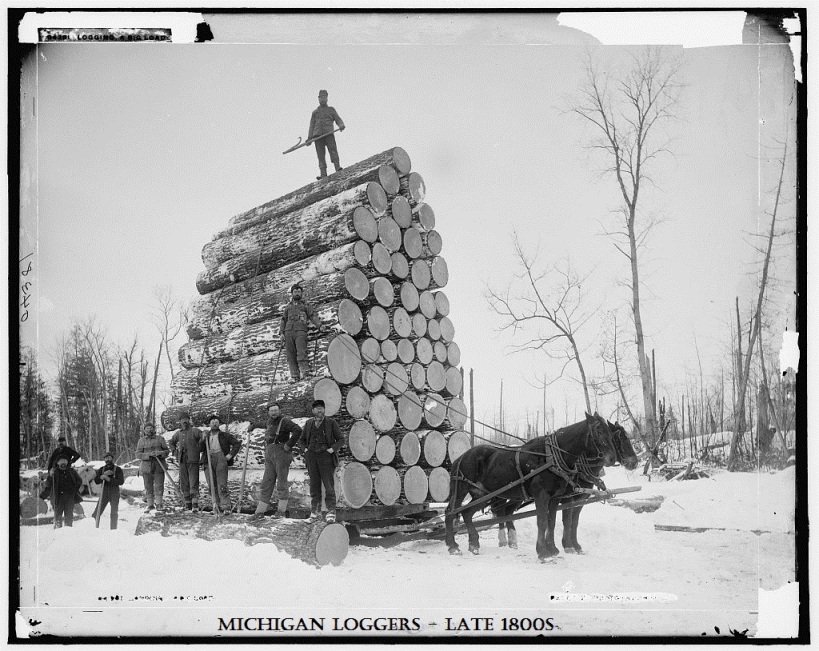 down the broad expanse of
the Father of Waters, one of the most picturesque sights and one most typical of
the industrial development which was the first impetus toward the exploiting and
cultivating of the Mississippi valley, now a most fertile and profitable
district of the country.
down the broad expanse of
the Father of Waters, one of the most picturesque sights and one most typical of
the industrial development which was the first impetus toward the exploiting and
cultivating of the Mississippi valley, now a most fertile and profitable
district of the country.
The lumber possibilities of the northwest, and the vast facilities for
transportation and distribution offered by the river and tributaries at once
attracted the attention of early settlers. As fast as settlement of communities
afforded, lumber mills sprang up and lumber rafting on the Mississippi
 rapidly
assumed gigantic proportions. Twenty-five years ago a lumber raft could be seen
from almost any point at almost any time, drifting with the current, or
propelled by small craft and accompanied by its unique crew of northern
woodsmen. Today the number of rafts passing down the river is small. The log
rafting business furnishes a very fair criterion of the lumber industry along
the river valley, and measuring the latter by present indications in the former
the general lumber industry is shown to have diminished rapidly of late years.
rapidly
assumed gigantic proportions. Twenty-five years ago a lumber raft could be seen
from almost any point at almost any time, drifting with the current, or
propelled by small craft and accompanied by its unique crew of northern
woodsmen. Today the number of rafts passing down the river is small. The log
rafting business furnishes a very fair criterion of the lumber industry along
the river valley, and measuring the latter by present indications in the former
the general lumber industry is shown to have diminished rapidly of late years.
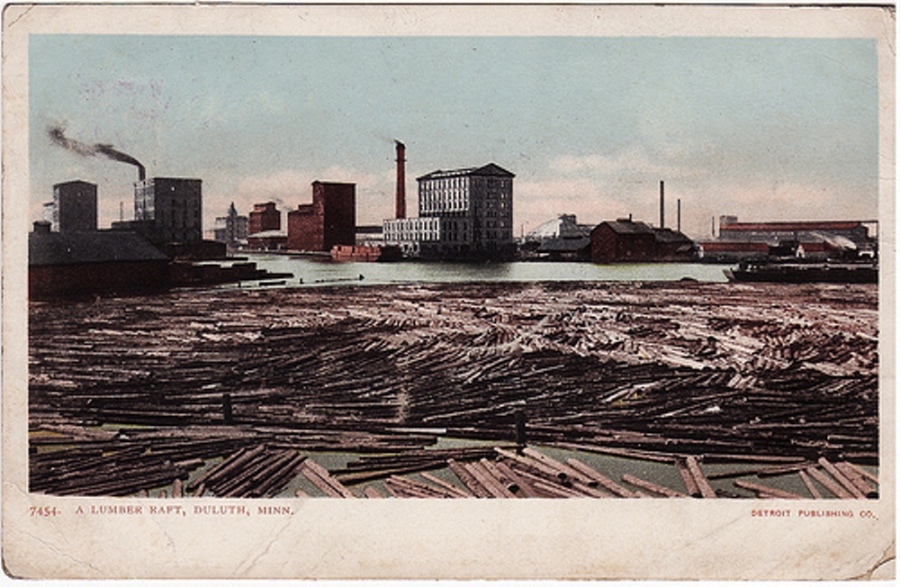 There are now but few mills on the river south of Burlington. These are located
at Keokuk Iowa, and Ft. Madison. For its supply of timber the Ft. Madison mill
depends entirely upon the general log market and therefore is liable to be
closed at any time.
There are now but few mills on the river south of Burlington. These are located
at Keokuk Iowa, and Ft. Madison. For its supply of timber the Ft. Madison mill
depends entirely upon the general log market and therefore is liable to be
closed at any time.
There are but two mills at Muscatine, both depending for supplies upon the open
log market and hence likely to shut down at any time. There are now only four
mills at Rock Island and Davenport, where formerly were eight. Clinton now has
but the Lamb and Joyce mills in operation.
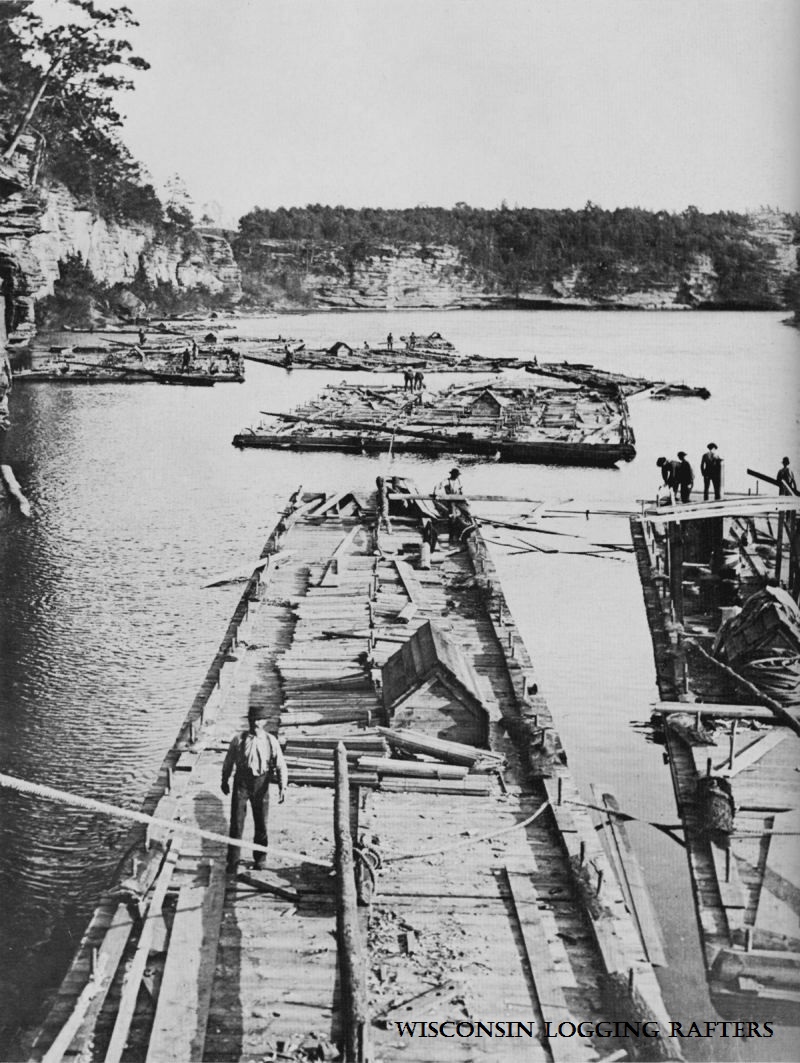 This story of the condition of the mills applies not only to the immediate
vicinity, but also to points farther north. Mills at La Crosse, Wis., at one
time handled 200,000,000 feet of lumber annually and the present season is the
last one there. Knapp Stout & Co. of Menominee, Wis., formerly handled
120,000,000 feet of lumber and now are entirely out of the northern pine
business. There is one mill at Eau Claire, Wis., doing the business for which in
earlier years eight mills were required. It is confidently predicted, moreover,
that the situation of the Orchard City on the great Burlington railroad system
since its close alliance with the North Pacific and the Great Northern will make
it possible for Burlington wholesale dealers to continue in business
indefinitely, obtaining through these carrying agents, supplies from Washington,
Oregon and Idaho. There now are distributed from this market several hundred
carloads of Pacific coast lumber products. This is also supplemented by large
supplies of southern pine that can be shipped to Iowa points and redistributed
from there.
This story of the condition of the mills applies not only to the immediate
vicinity, but also to points farther north. Mills at La Crosse, Wis., at one
time handled 200,000,000 feet of lumber annually and the present season is the
last one there. Knapp Stout & Co. of Menominee, Wis., formerly handled
120,000,000 feet of lumber and now are entirely out of the northern pine
business. There is one mill at Eau Claire, Wis., doing the business for which in
earlier years eight mills were required. It is confidently predicted, moreover,
that the situation of the Orchard City on the great Burlington railroad system
since its close alliance with the North Pacific and the Great Northern will make
it possible for Burlington wholesale dealers to continue in business
indefinitely, obtaining through these carrying agents, supplies from Washington,
Oregon and Idaho. There now are distributed from this market several hundred
carloads of Pacific coast lumber products. This is also supplemented by large
supplies of southern pine that can be shipped to Iowa points and redistributed
from there.
The resources of the north timber country, located chiefly in Minnesota and
Wisconsin have become exhausted. Twenty-five years ago logs were cut 30 miles
south of St. Paul. Today the lumber comes from patches of timber located 300
miles north of that point. The logs have to be railed from the woods to the
river tributaries, floated south on the Mississippi. But a few years ago Chicago
was the distributing point for three-fourths of the lumber used in the west. Now
practically no lumber is shipped from Chicago west.
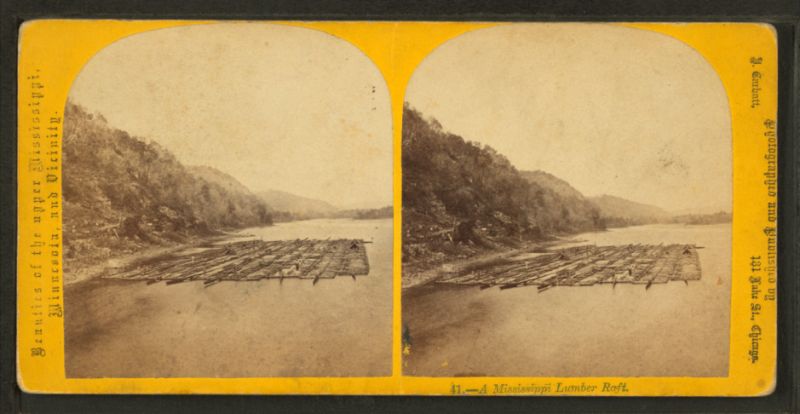
The explanation of the conditions that are favorable to Clinton wholesale
dealers and yet under which so many other milling interests along the river have
been forced to the wall, dates back some years. At a time when there seemed to
be an inexhaustible supply of timber land and the timber industry along the
river valley was flourishing and approaching the zenith of its career as a
profitable business enterprise there were two methods of securing supplies. One
was to buy the logs on the open market. Northern contractors either leased or
purchased land, cut the timber, rafted the logs down the river and sold them
where they could get the best price. The other method was for the various lumber
companies to purchase and own tracts of land, and handle their timber themselves
from the standing tree to the finished lumber. Years ago the first method of
securing supplies was by far better. There always were logs on the market.
Lumber and lumber men were plentiful in the North and wholesale dealers down the
river had only to pay for the logs delivered at their mills. The second method
was not nearly so profitable. Stump land was not so valuable and owners of vast
tracts of woodland often suffered losses such as devastating forest fires would
incur. Foresighted wholesale dealers, however, appreciated the truth that the
extensive wooded districts were in a few years to be swept clean, and those who
were at the same time forehanded and in a position to secure large tracts of
timber land at once made provision for the future. Confirmation of the success
of the latter policy is only too evident t the mill owners along the river who
have been compelled to depend on the open log market for supplies and who now
are being forced one by one to close down their mills since logs no longer can
be secured from that source.
| WJ Young Riverboat | Log Raft Under CNW Drawbridge | Lamb & Sons Sawmill 1891 | |
|
|||
| Lamb & Young Mills | WJ Young Upper Mill | Rock Island | |
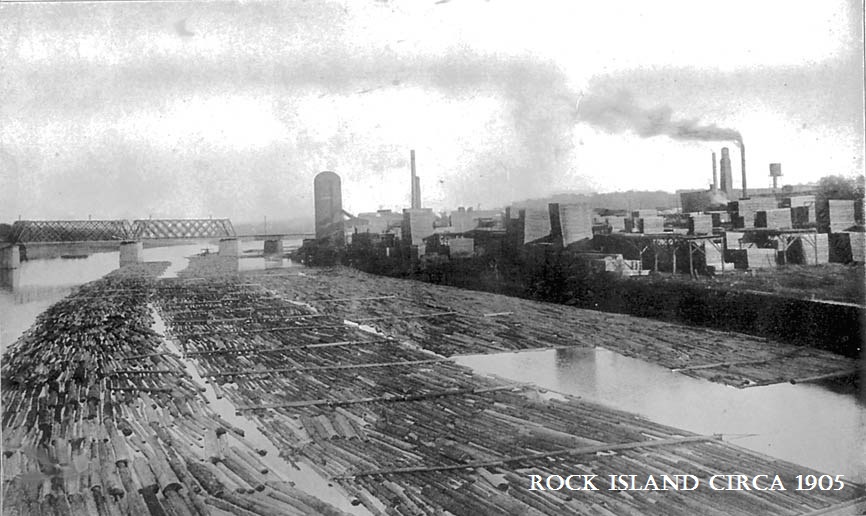 |
|||
| Rock Island abt 1905 |





